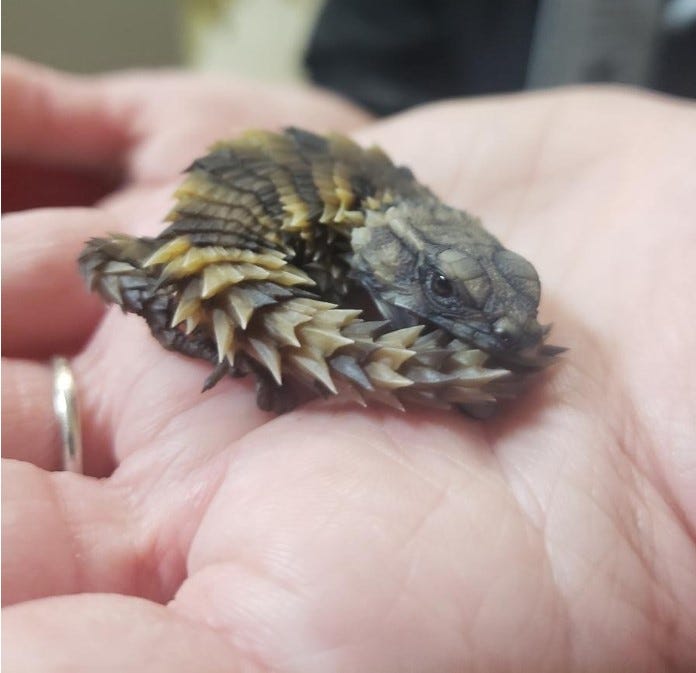

The more you have cohabited the more hides you need to provide. When they aren't sheddiing not as many hides need to be humid, but you should keep one or two humid. some hides should be much more humid then normal around the time that they are shedding. The lizards should be provided with plenty of spots to hide, this can be achieved by stacking rocks in different ways. They are also commonly housed on newspaper/paper towel as hatchlings.ĭo not provide your lizard with sand in captivity as it can cause impaction. These lizards do well on low humidity holding substrates such as reptile safe, well draining, chemical free, organic potting soil or top soil If using a loose bedding its recommend you use a food bowl to limmit ingestion of bedding.
#The armadillo lizard upgrade
This is the most often recommend tank size if it is your permanent enclosure for your lizard.įor every added lizard you should upgrade your enclosure by 10 gallons for up to 4 lizards at 100g which point it is recommend to build your own, much larger enclosure. Lifespan in the wild is unknown.One Jones armadillo lizard will comfortably live in a 40g tank. Armadillo lizards attain sexual maturity when they reach body length of 4 inches.Īrmadillo lizard can survive up to 25 years in captivity. Unlike other reptiles, females take care of their babies. Because of their unusual look, armadillo lizards are collected from the wild and sold in the pet shops around Europe and North America. Armadillo lizard inhabits deserts, scrublands and dry, rocky areas. Males are territorial and mate with females that live on their territories.įemale gives birth to one or two babies at the end of April (at the beginning of rainy season). Armadillo lizard, also known as armadillo spiny-tailed lizard or armadillo girdled lizard is a reptile that can be found only on the western coast of South Africa. Mating season takes place during the spring. In the case of danger, armadillo lizards curl into the ball that is unpalatable for most animals because of the spines on the neck and tail.Īrmadillo lizards are able to shed their tail in the case of danger.Īrmadillo lizards live in large groups that usually consist of up to 30 members (sometimes up to 60). However, armadillo lizards move slowly and predators can catch them easily.Īrmadillo lizards are named that way because of the armadillo-like tactic which they use to avoid predators. Because of their flattened bodies, they can hide in tight rock crevices. Whenever possible, armadillo lizards will try to escape from predators. Besides them, they are often targeted by birds of prey. Humans are the biggest enemies of armadillo lizards. Its diet mainly consists of termites, but it also consumes scorpions, millipedes, spiders and certain types of plants. They are even able to break their own jaws during the feeding.Īrmadillo lizards are diurnal animals (active during the day).Īrmadillo lizard is an omnivore (it eats plants and other animals).

They use sense of smell for detection of food and predators.Īrmadillo lizards have extremely strong bite. Front legs are longer than hind legs.Īrmadillo lizards have long, tube-like nostrils and excellent sense of smell. Unique coloration of the body provides camouflage.Īrmadillo lizards have triangular head and flattened body and tail. Chin is covered with black marks and throat with dark blotches. They are light to dark brown on a dorsal side of the body and yellow on the bottom side. It has 14 to 16 inches long tail.īody of armadillo lizards is covered with square-shaped scales. Huge collection, amazing choice, 100+ million high quality, affordable RF and RM images. Armadillo lizards are listed as vulnerable (they may become endangered in the near future).Īrmadillo lizard can reach 15 to 17 inches in length and 8 to 17 pounds of weight. Find the perfect armadillo lizard stock photo. High demand for armadillo lizards and well developed pet trade negatively affects their number in the wild.

Armadillo lizard, also known as armadillo spiny-tailed lizard or armadillo girdled lizard is a reptile that can be found only on the western coast of South Africa.


 0 kommentar(er)
0 kommentar(er)
